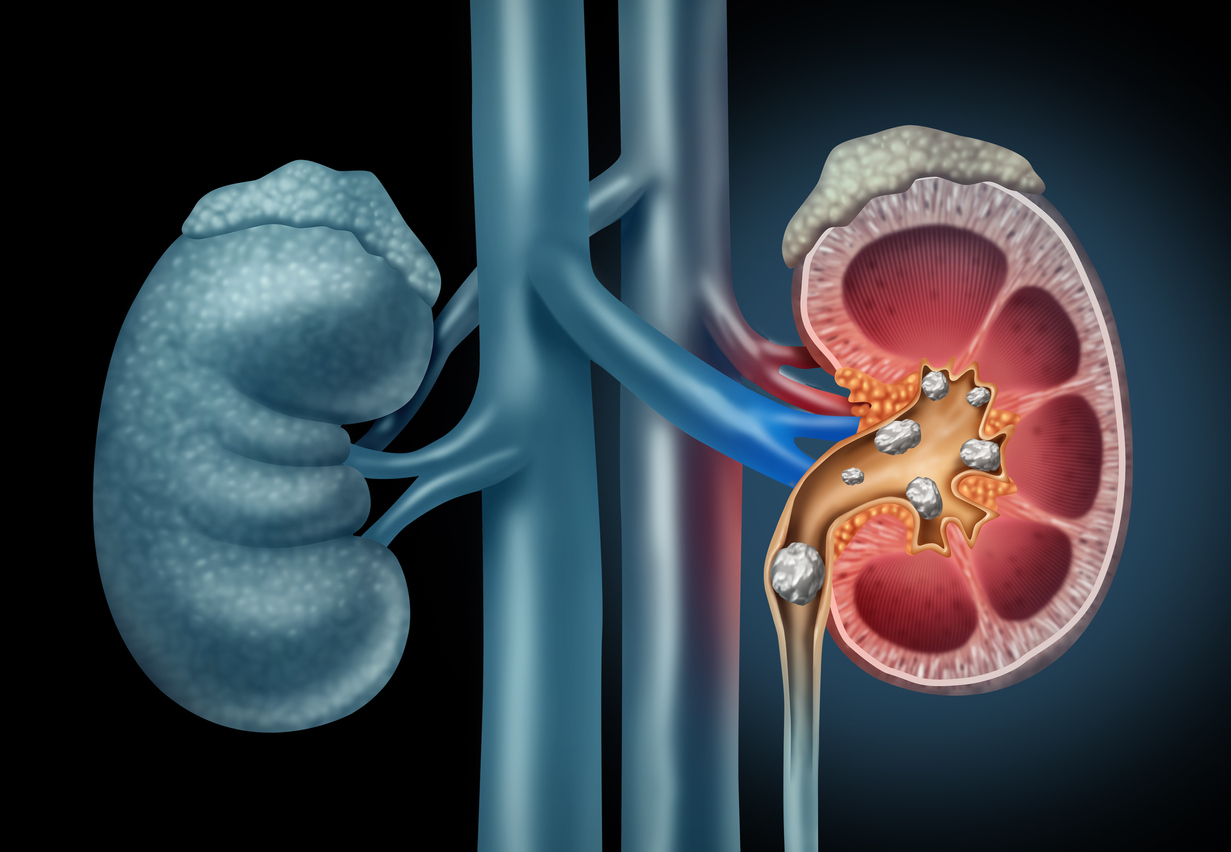Pain
Conventional Medical Treatments for Kidney Stones

What are kidney stones?
Kidney stones, also referred to as renal calculi, nephrolithiasis or urolithiasis, are hard masses made of millions of tiny crystals. They can range in shape and may be as small as a grain of sand or as large as a golf ball. Large kidney stones may become trapped in the ureter, which is the duct that urine travels from the kidney to the bladder. This can result in severe pain, bleeding, and the inability to pass urine. Surgery may be needed for larger kidney stones.
Conventional medical treatment
Although kidney stones typically pass on their own, there are times when they result in nausea, infection, fever, or severe pain. Treatment is dependent upon the size, location and cause of the stone. If the kidney function becomes poor or the urine flow is blocked, immediate medical attention is needed. Medical treatment may include medications, technology to break up the stone, or a surgical procedure.
Medication
Smaller kidney stones do not typically require invasive treatments. Acetaminophen, ibuprofen, or naproxen sodium may be recommended to decrease pain that occurs with kidney stones. If pain is severe, narcotics may be prescribed. Alpha blockers or calcium channel blockers can relax the ureter muscles to help the stone pass quicker with less pain. Sodium citrate or potassium citrate can make urine less acidic or prevent calcium stones from forming. Nausea medications may be needed. If an infection is present, antibiotics are prescribed.
Extracorporeal shock wave lithotripsy (ESWL)
ESWL involves the use of sounds to send focused shock waves, or vibrations, to the stone. This breaks the stones into smaller pieces and is the most common treatment for small to medium stones that are not easily passed through the urine. This procedure is done under light anesthesia or sedation and takes approximately 45 to 60 minutes to complete. It can cause pain, blood in the urine, bruising of the back or abdomen, or bleeding of nearby organs.
Ureteroscopy
An ureteroscopy involves an ureteroscope, which is a thin, flexible scope with a camera attached, being inserted through the urethra and bladder, and into the ureter. Smaller stones can be removed with a surgical “basket,” while larger stones may be broken up with the use of a laser. A small tube, or stent, may also be placed in the ureter to reduce inflammation and promote healing. This procedure is usually performed with a general or local anesthesia.
Percutaneous nephrolithotomy
If kidney stones are large or other procedures do not break them into small enough pieces to pass, a percutaneous nephrolithotomy may be needed. During this procedure, general anesthesia is used to insert a tube into the kidney through a small incision in the back. Stones can be suctioned out or disintegrated with an ultrasound probe. A stent is then placed in the ureter and typically removed one week later. A one to two day hospital stay is recommended.
Open surgery
If the stone is extremely large and all other treatment options have failed, open surgery may be needed. It requires full sedation as a surgeon utilizes a longer cut through the side to remove the stone through the opening. This procedure is rarely used for kidney stones and requires a few days stay in the hospital. Generally, complete recovery takes four to six weeks.
Parathyroid gland surgery
Calcium phosphate kidney stones may form if the parathyroid glands produce too much parathyroid hormone (hyperparathyroidism), resulting in excess calcium. These are small glands that are located close to the thyroid gland in the neck. Hyperparathyroidism may also occur if a tumor forms in a parathyroid gland. Stopping the overproduction of this hormone, or removing the growth, can interrupt the formation of kidney stones.




